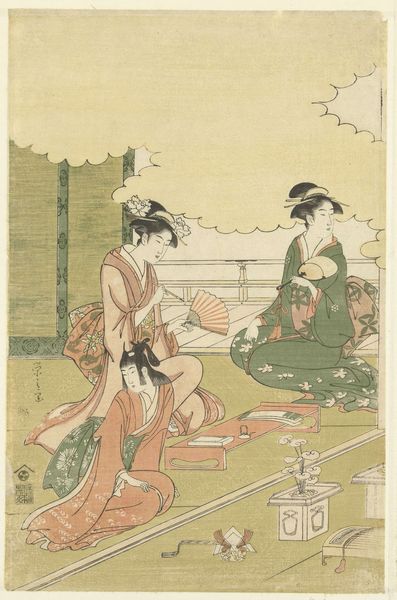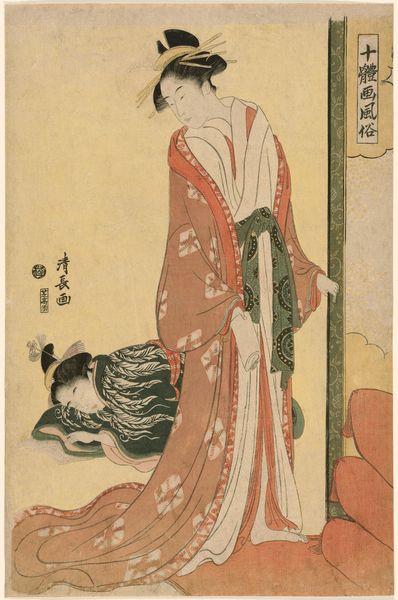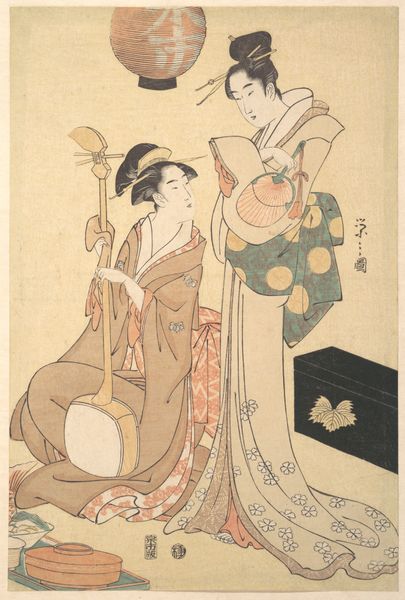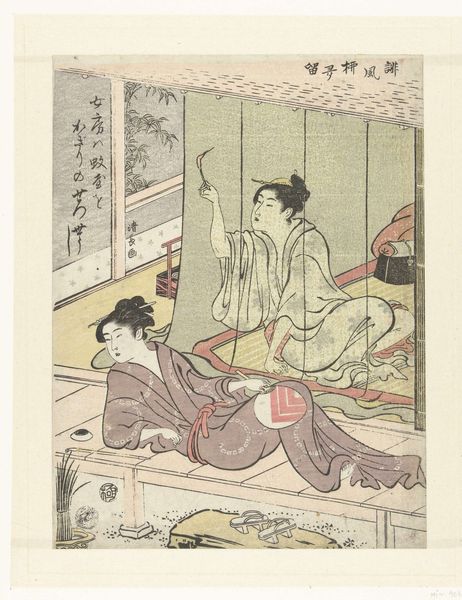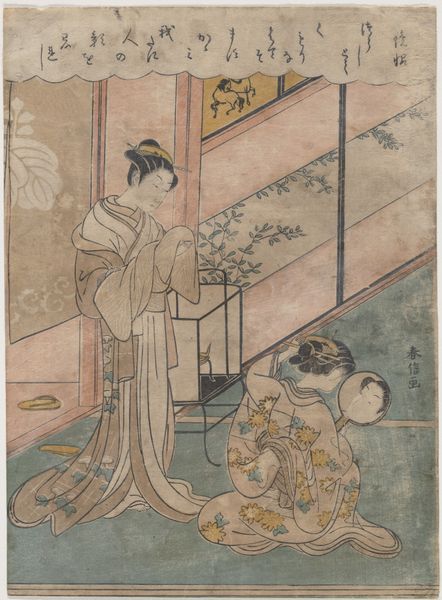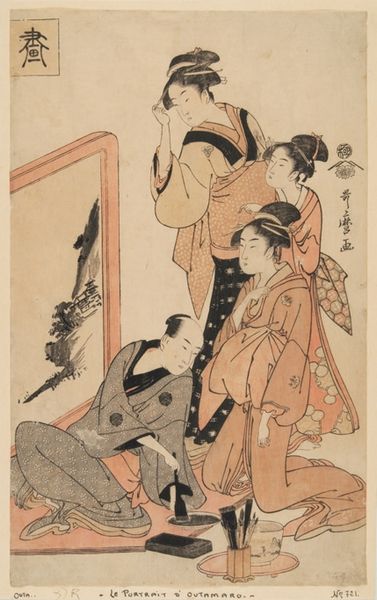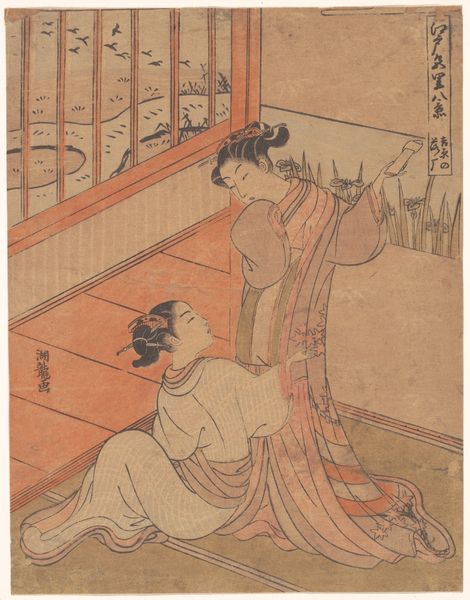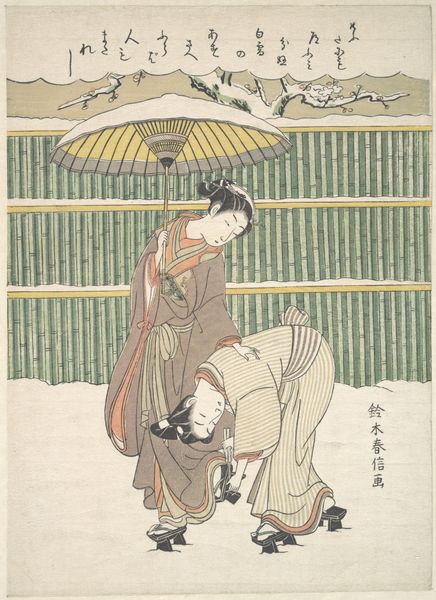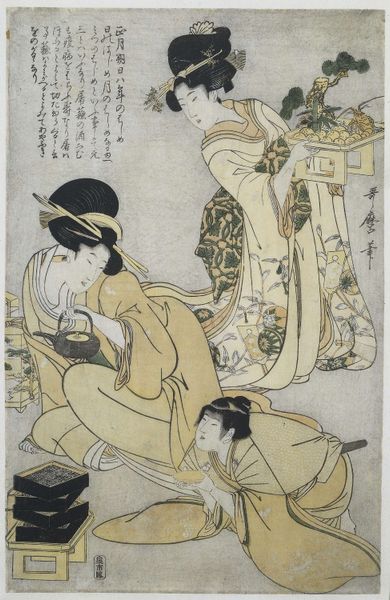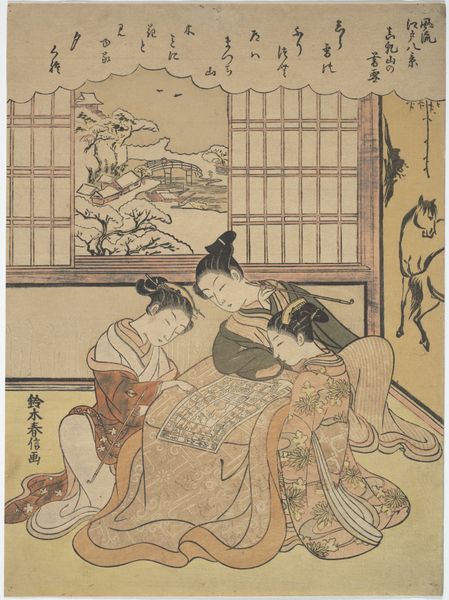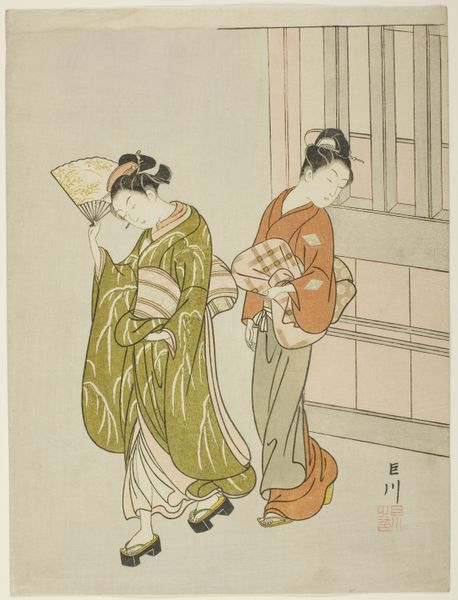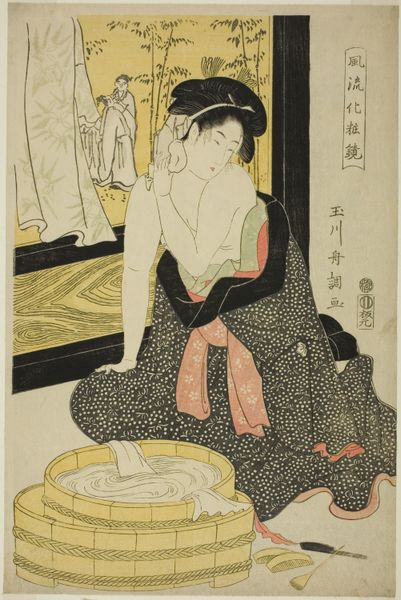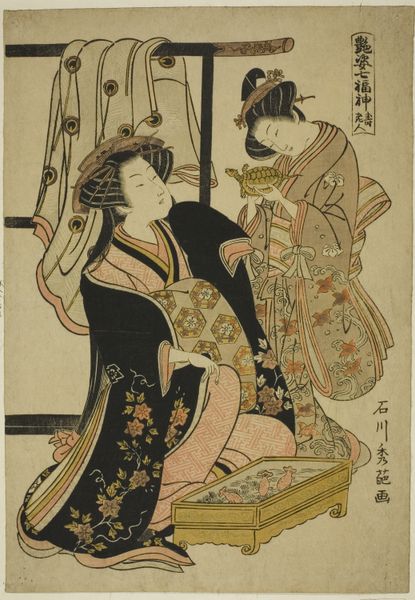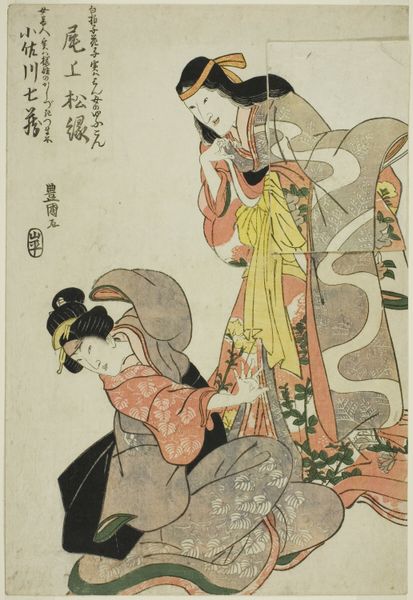
#
quirky illustration
#
personal sketchbook
#
wedding around the world
#
ink drawing experimentation
#
pen-ink sketch
#
sketchbook drawing
#
watercolour illustration
#
storyboard and sketchbook work
#
cartoon carciture
#
sketchbook art
Dimensions: height 382 mm, width 250 mm
Copyright: Rijks Museum: Open Domain
Curator: Here we have "Avondregen en wind in de pijnbomen" – that translates to “Evening Rain and Wind in the Pine Trees” – crafted sometime between 1793 and 1797 by Hosoda Eishi. What strikes you first? Editor: There’s a delicate stillness here. The composition is wonderfully balanced, but the flat, pastel colors give the scene a slightly melancholy feel. It feels staged, somehow, rather than capturing a lived moment. Curator: That’s interesting. It's Ukiyo-e, after all—a print tradition deeply rooted in reflecting the floating world of pleasure quarters, so that staged feel, as you call it, might be the whole point. Editor: Pleasure quarter or not, the lines feel meticulously carved. The fabric's details – each fold and flower – look labor intensive. I can imagine the artisan carefully layering each color. How many separate blocks were needed for an image like this, I wonder? Curator: Probably quite a few! Each color is applied with a separate woodblock. But more than that, consider the socio-political undercurrent. Ukiyo-e prints gained popularity as a more accessible art form during a time when access to traditional art was highly restricted. They became a key outlet for the urban middle class to enjoy artistic representation. Editor: So, a challenge to the artistic hierarchy through material means. Fascinating. I find myself drawn to the small details: the fan propped in the corner, the instrument that sits quietly. It's clear each element here was selected, not merely rendered. Curator: Precisely. And notice how even those 'background' elements provide clues about the sitters' lifestyle. Every carefully chosen object and detail tells a broader story of consumption, societal status and taste. Editor: It makes me appreciate the labor involved. The artist, the artisans, and the patrons are all participants in constructing and conveying this image. Curator: Exactly. We have seen how artwork can mirror society while artisans imprint meaning within materiality and mass culture. Editor: I appreciate it more with your insights.
Comments
No comments
Be the first to comment and join the conversation on the ultimate creative platform.
